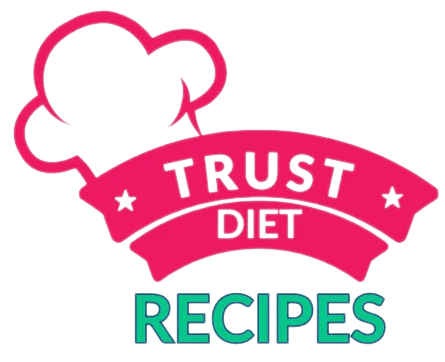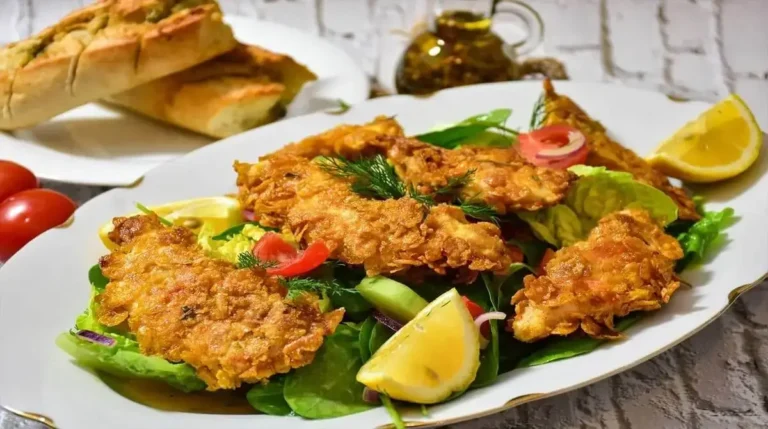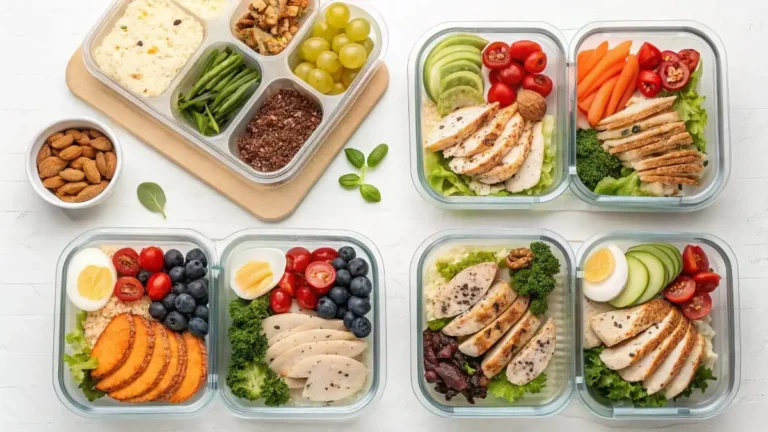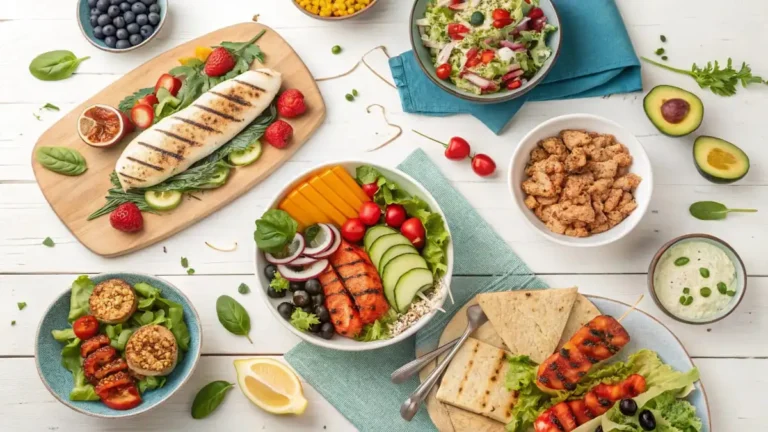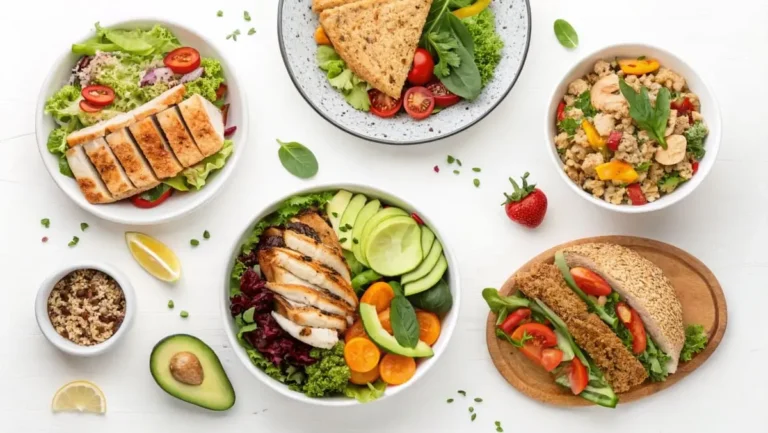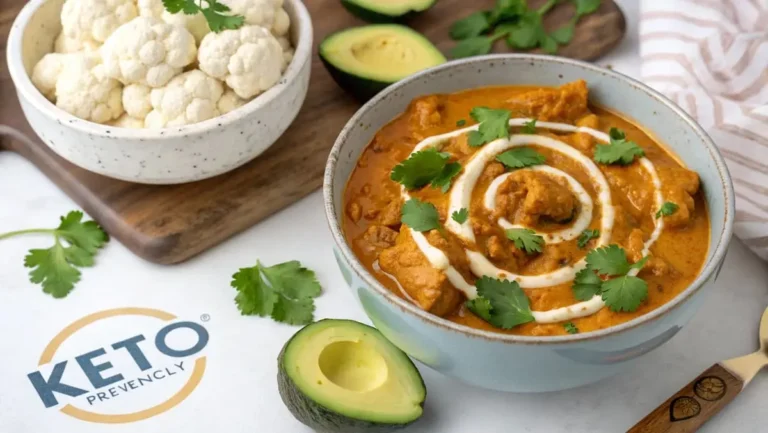Special Diet Meal Plans: Weekly Plans For Your Healthy Lifestyle
Table of Contents
Cutting Through the Diet Clutter
Feeling lost in the maze of diets online? You’re not alone! Everywhere you look, there’s a new diet trend promising amazing results. Keto, Paleo, Vegan, Gluten-Free, Low-Carb – the list goes on and on! It can be overwhelming trying to figure out where to even begin, let alone which diet might be right for you.
With so many “special diets” out there, it’s tough to know what’s real, what’s hype, and most importantly, what’s healthy and sustainable for your own body and lifestyle. Maybe you’re curious about weight loss, or you’re looking for ways to boost your energy, or maybe you’re managing a specific health condition. Whatever your reason, finding the right path can feel like a real challenge.
That’s where this guide comes in. We’re going to cut through the confusion and explore some of the most popular special diets out there. We’ll look at the real benefits they offer, the potential downsides to consider, and most importantly, we’ll give you delicious, easy-to-follow special diet meal plans to get you started. No more endless internet searches and diet overwhelm! Let’s explore the world of special diets together and find a path that feels good for you.
Why Go “Special”? The Real Benefits of Targeted Eating
“Special diet” might sound a bit… well, specialized. But really, these diets are just focused ways of eating that can offer some pretty awesome benefits for many people. It’s not just about the latest trend; it’s about tailoring your food choices to support your specific health goals and needs.
Beyond the Hype: Genuine Advantages of Special Diets
- Weight Management that Works: Let’s be honest, weight loss is often a big reason people explore special diets. Many of these diets, like Keto or Low-Carb, naturally reduce calorie intake by focusing on nutrient-dense foods and limiting processed, high-calorie options. They can also help regulate blood sugar and hormones, which play a key role in weight management. It’s not about quick fixes, but about creating a sustainable way of eating that supports a healthy weight over time.
- Digestive Harmony: Feeling bloated, gassy, or just generally uncomfortable after eating? Special diets can be game-changers for digestion. Diets like Gluten-Free or Low-FODMAP (we’ll talk about this one later!) eliminate common digestive triggers. By focusing on whole, unprocessed foods, many special diets naturally increase fiber intake and reduce inflammation in the gut, leading to smoother digestion and less discomfort.
- Energy Boost and Bye-Bye Fatigue: Ever feel like you’re dragging by 3 PM? The right special diet can be like hitting the reset button on your energy levels. By prioritizing nutrient-rich foods and cutting out processed junk, you’re giving your body the fuel it needs to thrive. Stable blood sugar levels (often a result of diets like Keto or Low-Carb) also prevent those energy crashes and keep you feeling energized throughout the day.
- Managing Health Conditions Naturally: For some people, special diets aren’t just about general wellness – they’re essential tools for managing specific health conditions.
- Celiac Disease and Gluten Sensitivity: A Gluten-Free diet is medically necessary to manage these conditions, preventing damage to the small intestine and reducing uncomfortable symptoms.
- Diabetes and Insulin Resistance: Low-Carb and Keto diets can be highly effective in managing blood sugar levels, reducing the need for medication, and improving insulin sensitivity.
- Irritable Bowel Syndrome (IBS): A Low-FODMAP diet can help identify and eliminate specific carbohydrates that trigger IBS symptoms like bloating, gas, and pain.
- Epilepsy: The Keto diet has been used for decades to help control seizures in some individuals with epilepsy, particularly children.
- Autoimmune Diseases: Some people with autoimmune conditions find that certain diets, like Paleo or Autoimmune Protocol (AIP – a stricter version of Paleo), can help reduce inflammation and manage symptoms.
- Improved Mental Clarity and Focus: Believe it or not, what you eat can directly impact your brainpower! Some special diets, particularly those that stabilize blood sugar and reduce inflammation (like Keto or Mediterranean), have been linked to improved mental clarity, focus, and even mood. When your brain is fueled by consistent energy and nutrients, it simply functions better.
- Discovering Food Sensitivities: Trying a special diet, especially an elimination diet like Low-FODMAP or AIP, can be a powerful way to uncover hidden food sensitivities you might not even realize you have. By systematically removing and reintroducing certain food groups, you can pinpoint exactly what foods are causing you problems and tailor your diet for optimal well-being.
Important Note: Before starting any special diet, especially if you have any health conditions, it’s always best to talk to your doctor or a registered dietitian. They can help you choose a diet that’s safe and appropriate for your individual needs and ensure you’re getting all the nutrients you need.
Decoding the Diet Landscape: Top Special Diets Explored
Let’s get into the nitty-gritty of some of the most popular special diets. We’ll break down what each diet is all about, what you can eat, and what you might need to watch out for.
1. The Keto Diet: Fueling on Fat
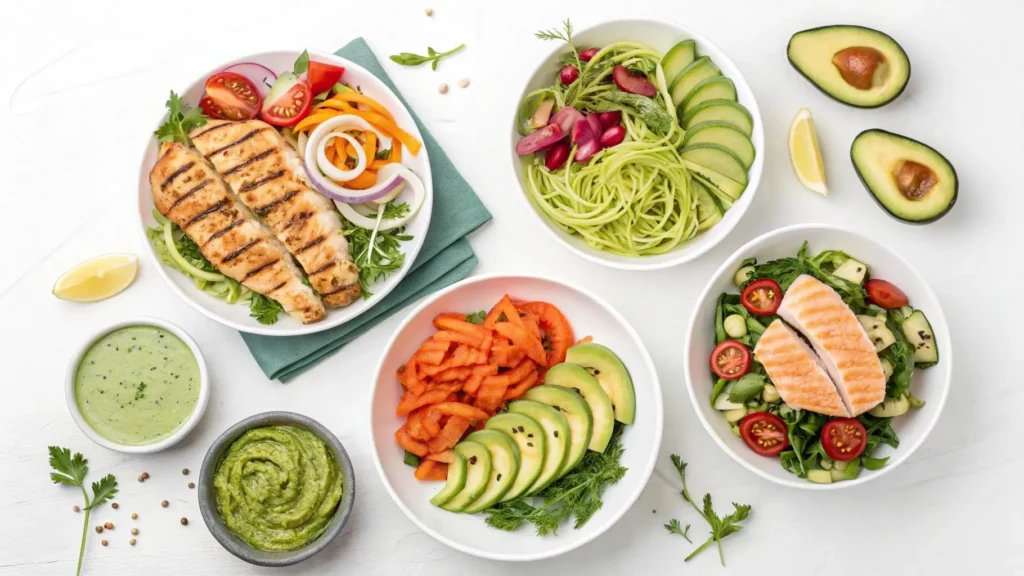
- The Core Idea: Keto, short for ketogenic, is a super low-carbohydrate, high-fat diet. The goal is to switch your body’s primary fuel source from carbohydrates to fat. When you drastically reduce carbs, your body enters a metabolic state called ketosis. In ketosis, your liver starts breaking down fat into molecules called ketones. These ketones become your body’s main energy source instead of glucose (sugar) from carbs.
- The Macro Breakdown: Keto isn’t just about cutting carbs; it’s about getting the right balance of macronutrients (fat, protein, carbs):
- Fat: 70-80% of daily calories – This is the star of the keto show! Think healthy fats like avocado, olive oil, coconut oil, nuts, seeds, fatty fish.
- Protein: 15-20% of daily calories – Moderate protein intake is important to maintain muscle mass. Choose protein sources like meat, poultry, fish, eggs, tofu (in moderation), and some dairy.
- Carbohydrates: 5-10% of daily calories (typically under 50 grams of net carbs per day) – Carbs are severely restricted. Focus on very low-carb vegetables like leafy greens, broccoli, cauliflower, and limit starchy vegetables, fruits, and grains.
- Keto-Friendly Food Powerhouse:
- Healthy Fats: Avocado, avocado oil, olive oil, coconut oil, MCT oil, butter, ghee, lard, tallow, mayonnaise (made with avocado oil or olive oil), nuts (macadamia nuts, almonds, walnuts, pecans), seeds (chia seeds, flax seeds, sunflower seeds, pumpkin seeds).
- Proteins: Beef, chicken, pork, lamb, turkey, fish (salmon, tuna, mackerel, sardines), shellfish (shrimp, crab, lobster), eggs, tofu (in moderation), tempeh (in moderation), some cheeses (cheddar, mozzarella, cream cheese, goat cheese, brie).
- Very Low-Carb Vegetables: Leafy greens (spinach, kale, lettuce, arugula), broccoli, cauliflower, Brussels sprouts, asparagus, zucchini, cucumber, bell peppers, mushrooms, celery, radishes, green beans.
- Low-Carb Fruits (in very small amounts): Berries (strawberries, raspberries, blueberries, blackberries) – in moderation.
- Dairy (Full-Fat): Heavy cream, cream cheese, full-fat sour cream, unsweetened yogurt (plain Greek yogurt, full-fat).
- Sweeteners (Keto-Friendly): Stevia, erythritol, monk fruit, xylitol (in moderation).
- Keto Challenges and Considerations:
- “Keto Flu”: In the first few days or weeks, some people experience flu-like symptoms (headache, fatigue, nausea) as their body adapts to ketosis. Staying hydrated and ensuring electrolyte intake (sodium, potassium, magnesium) can help.
- Nutrient Deficiencies: It can be challenging to get enough fiber and certain vitamins and minerals on a very restrictive keto diet. Focusing on nutrient-dense keto-friendly foods and potentially supplementing with electrolytes and a multivitamin may be needed.
- Sustainability: The keto diet can be quite restrictive and may not be sustainable long-term for everyone. It can be socially challenging and require careful meal planning.
- Digestive Issues: Some people experience constipation on keto due to low fiber intake. Increasing non-starchy vegetable intake and ensuring adequate hydration can help.
- “Dirty Keto” vs. “Clean Keto”: It’s important to focus on “clean keto” – emphasizing whole, unprocessed keto-friendly foods rather than relying on processed keto snacks and “fat bombs” that may be high in unhealthy fats and artificial ingredients.
2. The Vegan Diet: Plant-Powered Goodness

- The Core Idea: The vegan diet is completely plant-based, meaning it excludes all animal products and animal-derived ingredients. This includes:
- Meat (beef, pork, lamb, poultry)
- Fish and Seafood
- Dairy (milk, cheese, yogurt, butter, cream)
- Eggs
- Honey (for strict vegans)
- Gelatin (animal-derived)
- Whey and Casein (dairy proteins)
Veganism is often motivated by ethical reasons (animal welfare), environmental concerns (sustainability), and health benefits.
- Vegan Food Superstars:
- Plant-Based Proteins: Legumes (lentils, beans, chickpeas, peas, soybeans), tofu, tempeh, edamame, seitan (wheat gluten – not gluten-free), nuts, seeds, quinoa, nutritional yeast.
- Fruits and Vegetables: All fruits and vegetables are vegan-friendly! Emphasize a wide variety of colors and types for optimal nutrition.
- Grains: Whole grains like brown rice, quinoa, oats (certified gluten-free for gluten-free vegans), barley (not gluten-free), farro (not gluten-free), millet, amaranth, sorghum, buckwheat.
- Healthy Fats: Avocado, avocado oil, olive oil, coconut oil, nuts, seeds, nut butter (peanut butter, almond butter, cashew butter), tahini (sesame seed paste).
- Plant-based milk: Almond milk, soy milk, oat milk, coconut milk, cashew milk, rice milk.
- Plant-Based Yogurts: Soy yogurt, coconut yogurt, almond yogurt, oat yogurt, cashew yogurt.
- Plant-Based Cheeses: Made from nuts, soy, coconut oil, and tapioca starch – a variety of vegan cheeses available.
- Plant-Based Butter and Margarine: Vegan butter and margarine made from plant oils.
- Plant-Based Egg Replacers: Flax eggs, chia eggs, applesauce, mashed banana, commercial egg replacers.
- Sweeteners: Maple syrup, agave nectar, dates, fruit.
- Vegan Diet Challenges and Considerations:
- Nutrient Deficiencies: Vegans need to be mindful of getting enough certain nutrients that are more readily available in animal products:
- Vitamin B12: Vitamin B12 is primarily found in animal products. Vegans must supplement with Vitamin B12 or consume fortified foods (nutritional yeast, fortified plant milks, fortified cereals).
- Iron: Plant-based iron (non-heme iron) is less easily absorbed than animal-based iron (heme iron). Vegans need to consume iron-rich plant foods (lentils, beans, spinach, tofu) and pair them with Vitamin C-rich foods to enhance absorption.
- Calcium: Vegans need to get calcium from plant sources like leafy greens, fortified plant milk, tofu, and almonds.
- Omega-3 Fatty Acids (specifically DHA and EPA): Plant-based omega-3s (ALA) need to be converted to DHA and EPA by the body, and this conversion is not always efficient. Vegans may benefit from an algae-based DHA and EPA supplement or focus on ALA-rich foods like flax seeds, chia seeds, and walnuts.
- Zinc: Plant-based zinc absorption can be inhibited by phytates in grains and legumes. Soaking and sprouting grains and legumes can improve zinc absorption.
- Protein Intake: While vegan diets can provide enough protein, it requires careful meal planning to ensure you’re getting a variety of plant protein sources to meet your needs and obtain all essential amino acids.
- Meal Planning and Variety: To ensure nutritional adequacy and prevent boredom, vegan diets require thoughtful meal planning and variety in food choices.
- Social Challenges: Eating out and social gatherings can sometimes be challenging for vegans, as not all restaurants offer vegan options, and social norms may revolve around animal-based foods.
- Nutrient Deficiencies: Vegans need to be mindful of getting enough certain nutrients that are more readily available in animal products:
3. The Gluten-Free Diet: Avoiding Gluten for Health and Well-being

- The Core Idea: The gluten-free diet eliminates gluten, a protein found in wheat, barley, rye, and triticale. This diet is medically necessary for individuals with:
- Celiac Disease: An autoimmune disorder where gluten damages the small intestine. For more details: https://celiac.org/
- Non-Celiac Gluten Sensitivity (Gluten Intolerance): Experiencing symptoms (digestive issues, fatigue, headaches) after eating gluten, even without celiac disease.
For these individuals, even small amounts of gluten can cause health problems. A strict gluten-free diet is essential for managing their conditions.
- Gluten-Free Food Goldmines:
- Naturally Gluten-Free Foods: As we discussed in detail in a previous article, many whole foods are naturally gluten-free:
- Fruits and Vegetables
- Meat, Poultry, Fish, Seafood (unprocessed and unbreaded)
- Eggs
- Legumes
- Nuts and Seeds
- Dairy (plain, unflavored)
- Gluten-Free Grains and Starches (rice, quinoa, gluten-free oats, corn, buckwheat, millet, amaranth, sorghum, tapioca, arrowroot, potato starch, cassava flour, coconut flour, almond flour, rice flour).
- Healthy Fats (oils, avocado, butter, ghee, nuts, seeds).
- Certified Gluten-Free Products: Look for packaged foods labeled “certified gluten-free,” including:
- Gluten-Free Bread and Pasta
- Gluten-Free Crackers and Snacks
- Gluten-Free Baking Essentials
- Gluten-Free Cereals
- Gluten-Free Sauces, Dressings, Condiments (check labels carefully).
- Gluten-Free Beer and Cider.
- Naturally Gluten-Free Foods: As we discussed in detail in a previous article, many whole foods are naturally gluten-free:
- Gluten-Free Diet Challenges and Considerations:
- Hidden Gluten: Gluten can be hidden in many processed foods, sauces, condiments, and even medications. Careful label reading is crucial.
- Cross-Contamination: Cross-contamination with gluten can occur during food processing, manufacturing, and even in home kitchens. Preventing cross-contamination is essential for individuals with celiac disease.
- Processed Gluten-Free Foods: Many processed gluten-free products can be high in refined carbohydrates, added sugars, and unhealthy fats. Focus on whole, naturally gluten-free foods as the base of your diet and choose processed gluten-free products in moderation.
- Cost: Gluten-free products can sometimes be more expensive than their gluten-containing counterparts.
- Social Challenges: Eating out and social gatherings can be challenging when following a strict gluten-free diet. Careful planning and communication with restaurants and hosts are important.
Delicious Diet in Action: Sample Meal Plans for Each Special Diet
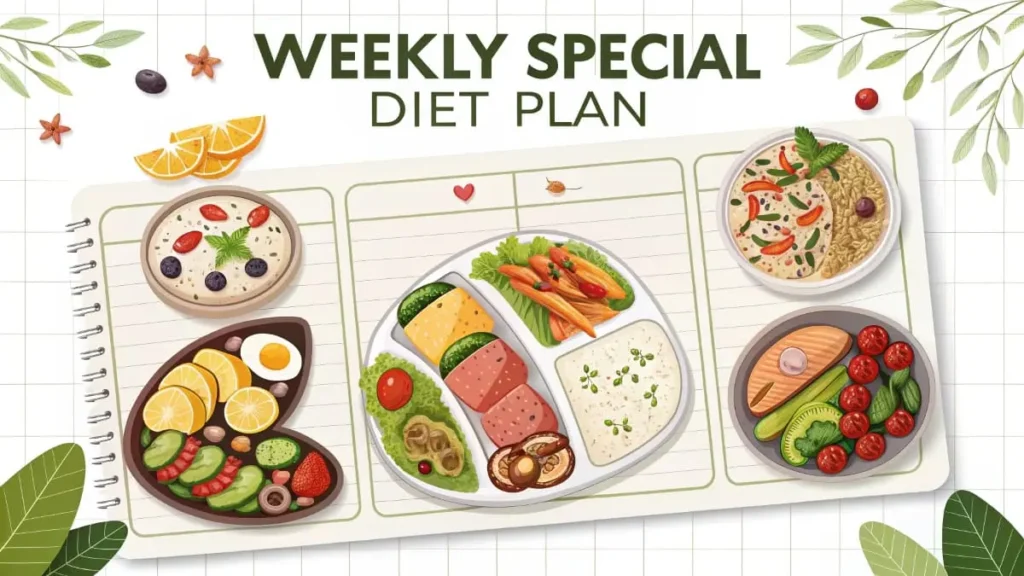
Okay, enough theory! Let’s get to the delicious part – meal plans! Here are sample 7-day meal plans for each diet to give you a taste of what eating Keto, Vegan, and Gluten-Free can look like. These are just examples, and you can adjust them to your preferences and calorie needs. As a chef, I’ve made sure these plans are not only diet-compliant but also packed with flavor and variety!
(Chef’s Note for all meal plans): Feel free to swap out meals and snacks with other options from the food lists provided earlier in each diet section. Use fresh, seasonal ingredients whenever possible for the best flavor and nutrition. Season your food generously with herbs, spices, and salt and pepper to make every meal enjoyable!
(1) Keto Meal Plan (7 Days of High-Fat, Low-Carb Deliciousness)
- Monday:
- Breakfast: Scrambled eggs with spinach and avocado (cook spinach in butter or olive oil with garlic before adding eggs).
- Lunch: Grilled chicken Caesar salad (use homemade keto Caesar dressing – recipe below, and romaine lettuce instead of croutons).
- Dinner: Baked salmon with roasted broccoli (drizzle both with olive oil and season with lemon pepper).
- Snacks: Handful of macadamia nuts, celery sticks with cream cheese.
- Tuesday:
- Breakfast: Keto coffee (blend coffee with coconut oil and heavy cream – optional: add keto-friendly sweetener).
- Lunch: Turkey lettuce wraps with avocado and tomato (use large lettuce leaves as wraps, fill with sliced turkey, avocado, tomato, and a dollop of mayonnaise).
- Dinner: Beef stir-fry with coconut aminos and vegetables (use beef strips, stir-fry with broccoli, bell peppers, mushrooms, and a sauce made with coconut aminos, ginger, and garlic).
- Snacks: String cheese, cucumber slices with guacamole.
- Wednesday:
- Breakfast: Avocado smoothie with almond milk and protein powder (blend avocado, almond milk, keto-friendly protein powder, spinach, and a touch of stevia or erythritol).
- Lunch: Chicken Caesar salad with homemade Caesar dressing (leftovers from Monday’s lunch).
- Dinner: Pork chops with a side of roasted Brussels sprouts (roast Brussels sprouts with bacon pieces and olive oil).
- Snacks: Hard-boiled eggs, almonds.
- Thursday:
- Breakfast: Omelet with cheese and mushrooms (use cheese and sautéed mushrooms as filling).
- Lunch: Leftover pork chops and roasted Brussels sprouts (from Wednesday’s dinner).
- Dinner: Shrimp scampi with zucchini noodles (sauté shrimp in butter and garlic, serve over zucchini noodles “zoodles”).
- Snacks: Pecans, olives.
- Friday:
- Breakfast: Coconut yogurt with berries and seeds (full-fat coconut yogurt topped with a small amount of berries and chia seeds).
- Lunch: Tuna salad lettuce wraps (mix tuna with mayonnaise, celery, onion – use lettuce leaves as wraps).
- Dinner: Keto chili (made with ground beef, tomatoes, onions, peppers, spices – no beans!).
- Snacks: Macadamia nut butter on celery, cheese crisps.
- Saturday:
- Breakfast: Keto pancakes (made with almond flour, eggs, cream cheese – recipe online, top with butter and sugar-free syrup).
- Lunch: Leftover keto chili (from Friday’s dinner).
- Dinner: Steak with asparagus and cauliflower mash (grill steak, roast asparagus with olive oil and garlic, make cauliflower mash by steaming cauliflower and blending with butter, cream cheese, and seasonings).
- Snacks: Walnuts, avocado slices sprinkled with salt.
- Sunday:
- Breakfast: Scrambled eggs with bacon and avocado.
- Lunch: Chicken salad (made with mayonnaise, celery, onion) served on lettuce leaves.
- Dinner: Roast chicken with roasted root vegetables (carrots, turnips, parsnips – roast with olive oil and herbs – root vegetables should be limited in portion size on keto due to carb content).
- Snacks: Pork rinds, cheese cubes.
(Chef’s Keto Caesar Dressing Recipe): Whisk together 1/2 cup mayonnaise (avocado oil mayo preferred), 2 tablespoons grated Parmesan cheese, 1 tablespoon lemon juice, 1 teaspoon Dijon mustard, 1 clove garlic (minced), 1/4 teaspoon Worcestershire sauce (check for keto-friendly), salt and pepper to taste.
(2) Vegan Meal Plan (7 Days of Plant-Based Deliciousness)
- Monday:
- Breakfast: Overnight oats with almond milk and chia seeds (as described in the Keto plan, but use maple syrup or agave for sweetener if desired, and add fruit and nuts).
- Lunch: Chickpea salad sandwich on whole-wheat bread (mash chickpeas with vegan mayonnaise, celery, onion, and seasonings – serve on whole-wheat bread for non-gluten-free vegans, or gluten-free bread for gluten-free vegans).
- Dinner: Lentil soup with a side of quinoa and steamed broccoli (hearty lentil soup with carrots, celery, onions, vegetable broth, spices – serve with quinoa and steamed broccoli).
- Snacks: Apple slices with peanut butter, trail mix (vegan, no chocolate chips).
- Tuesday:
- Breakfast: Smoothie bowl with almond milk, banana, and spinach (blend almond milk, banana, spinach, berries, protein powder – top with granola, seeds, nuts).
- Lunch: Vegan pizza with a whole-wheat crust and roasted vegetables (use whole-wheat pizza dough for non-gluten-free vegans, or gluten-free crust for gluten-free vegans – top with tomato sauce, roasted vegetables like bell peppers, onions, zucchini, mushrooms, vegan cheese).
- Dinner: Stuffed bell peppers with quinoa, black beans, and vegetables (halve bell peppers, fill with a mixture of cooked quinoa, black beans, corn, diced tomatoes, onions, spices – bake until peppers are tender).
- Snacks: Edamame, carrot sticks with hummus.
- Wednesday:
- Breakfast: Avocado toast with scrambled tofu and cherry tomatoes (mash avocado on whole-wheat toast for non-gluten-free vegans, or gluten-free toast for gluten-free vegans – top with scrambled tofu and halved cherry tomatoes).
- Lunch: Black bean and sweet potato tacos with guacamole (use corn tortillas for gluten-free vegans, or whole-wheat tortillas for non-gluten-free vegans – fill with roasted sweet potatoes, black beans, salsa, guacamole).
- Dinner: Vegan stir-fry with tofu, vegetables, and brown rice (stir-fry tofu with broccoli, snap peas, carrots, bell peppers, mushrooms in a vegan stir-fry sauce – serve over brown rice).
- Snacks: Vegan yogurt with fruit, almonds.
- Thursday:
- Breakfast: Tofu scramble with vegetables (scramble crumbled tofu with onions, peppers, spinach, seasonings – serve with whole-wheat toast or gluten-free toast).
- Lunch: Leftover vegan stir-fry with tofu and vegetables (from Wednesday’s dinner).
- Dinner: Vegan chili (made with beans, lentils, corn, tomatoes, onions, peppers, spices – serve with cornbread for non-gluten-free vegans, or gluten-free cornbread for gluten-free vegans).
- Snacks: Popcorn (air-popped or vegan-buttered), celery sticks with vegan cream cheese.
- Friday:
- Breakfast: Vegan pancakes (use vegan pancake mix or make from scratch with plant milk, flour, baking powder – top with fruit and maple syrup).
- Lunch: Vegan chili (leftovers from Thursday’s dinner).
- Dinner: Vegan pasta primavera (use whole-wheat pasta for non-gluten-free vegans, or gluten-free pasta for gluten-free vegans – toss with sautéed spring vegetables like asparagus, peas, zucchini, and a light vegan cream sauce).
- Snacks: Cashews, fruit salad.
- Saturday:
- Breakfast: Vegan breakfast burrito (use whole-wheat tortilla for non-gluten-free vegans, or gluten-free tortilla for gluten-free vegans – fill with scrambled tofu, black beans, salsa, avocado).
- Lunch: Vegan pasta primavera (leftovers from Friday’s dinner).
- Dinner: Homemade veggie burgers on whole-wheat buns (for non-gluten-free vegans) or gluten-free buns (for gluten-free vegans – use homemade or store-bought veggie burgers, top with lettuce, tomato, onion, vegan cheese).
- Snacks: Vegan protein bar, trail mix (vegan, with dark chocolate chips).
- Sunday:
- Breakfast: Vegan waffles (use vegan waffle mix or make from scratch – top with fruit and maple syrup).
- Lunch: Veggie burgers (leftovers from Saturday’s dinner).
- Dinner: Roasted vegetable and lentil shepherd’s pie (top lentil and vegetable filling with mashed sweet potatoes instead of mashed potatoes for extra nutrients – bake until bubbly).
- Snacks: Sunflower seeds, grapes.
(3) Gluten-Free Meal Plan (7 Days of Gluten-Free Deliciousness)
- Monday:
- Breakfast: Gluten-free pancakes with almond butter and maple syrup (use gluten-free pancake mix or make from scratch with gluten-free flour).
- Lunch: Grilled chicken breast with a side of roasted sweet potatoes (season chicken and sweet potatoes with herbs and spices).
- Dinner: Beef and vegetable stir-fry with gluten-free soy sauce (use gluten-free soy sauce or tamari, stir-fry beef with broccoli, carrots, snap peas, bell peppers).
- Snacks: Rice cakes with avocado, and cheese slices.
- Tuesday:
- Breakfast: Scrambled eggs with gluten-free toast and avocado (use gluten-free bread for toast).
- Lunch: Turkey and avocado wrap with gluten-free wrap and salad (use gluten-free tortillas or wraps).
- Dinner: Baked salmon with a side of roasted asparagus (season salmon and asparagus with lemon and dill).
- Snacks: Gluten-free crackers with hummus, and almonds.
- Wednesday:
- Breakfast: Smoothie with almond milk, banana, and gluten-free protein powder (use certified gluten-free protein powder).
- Lunch: Chicken Caesar salad with homemade gluten-free dressing (use romaine lettuce, grilled chicken, Parmesan cheese, homemade gluten-free Caesar dressing – recipe adaptable from Keto recipe by using regular mayonnaise and adding a touch of honey if desired).
- Dinner: Pork chops with a side of roasted Brussels sprouts (season pork chops and Brussels sprouts with herbs and garlic).
- Snacks: Popcorn (air-popped or gluten-free buttered), hard-boiled eggs.
- Thursday:
- Breakfast: Omelet with cheese and vegetables (use cheese and sautéed vegetables like onions, peppers, and mushrooms as filling).
- Lunch: Leftover pork chops and roasted Brussels sprouts (from Wednesday’s dinner).
- Dinner: Shrimp and grits (use gluten-free grits or polenta, sauté shrimp with garlic and butter, serve over grits).
- Snacks: Cashews, fruit salad.
- Friday:
- Breakfast: Gluten-free waffles with berries and whipped cream (use gluten-free waffle mix or make from scratch, top with berries and whipped cream).
- Lunch: Leftover shrimp and grits (from Thursday’s dinner).
- Dinner: Chicken fajitas with corn tortillas (use corn tortillas, sauté chicken strips with onions and peppers, serve with salsa, guacamole, sour cream).
- Snacks: Gluten-free granola bar, cheese and grapes.
- Saturday:
- Breakfast: Breakfast burrito with scrambled eggs, black beans, and salsa (use gluten-free tortilla, fill with scrambled eggs, black beans, salsa, avocado).
- Lunch: Chicken fajitas (leftovers from Friday’s dinner).
- Dinner: Grilled steak with baked potato and green salad (grill steak, bake potato, prepare green salad with gluten-free dressing).
- Snacks: Walnuts, yogurt (plain or fruit).
- Sunday:
- Breakfast: French toast made with gluten-free bread (use gluten-free bread, dip in egg mixture, pan-fry, top with fruit and maple syrup).
- Lunch: Steak salad (slice leftover steak over a green salad with gluten-free dressing).
- Dinner: Roasted chicken with roasted root vegetables (carrots, potatoes, parsnips – roast chicken and root vegetables with herbs and olive oil).
- Snacks: Pumpkin seeds, apple slices with almond butter.
Beyond Keto, Vegan, Gluten-Free: Exploring More Special Diets
While Keto, Vegan, and Gluten-Free are super popular, the world of special diets is much broader! Here are a few more diets you might be interested in exploring:
(4) The Paleo Diet: Eating Like Our Ancestors
- The Core Idea: The Paleo diet, also known as the “caveman diet,” is based on the idea of eating foods that our Paleolithic ancestors supposedly ate before the advent of agriculture. It focuses on whole, unprocessed foods and excludes foods that are believed to be “modern” and potentially harmful to our health.
- Paleo Food Focus:
- Meat, Poultry, Fish, Seafood: Lean meats, grass-fed beef, wild-caught fish, poultry without skin.
- Fruits and Vegetables: All fruits and vegetables (except potatoes and sweet potatoes are sometimes limited due to higher carb content).
- Nuts and Seeds: Except peanuts (legumes, technically excluded by some Paleo purists).
- Healthy Fats: Olive oil, coconut oil, avocado oil, nut oils.
- Eggs.
- Foods to Avoid on Paleo:
- Grains: Wheat, barley, rye, oats, corn, rice, quinoa, etc. (all grains are excluded).
- Legumes: Beans, lentils, peanuts, soy products (some Paleo followers are more lenient with legumes, but strict Paleo excludes them).
- Dairy: Milk, cheese, yogurt, butter (some Paleo followers allow ghee or butter, but strict Paleo excludes all dairy).
- Processed Foods: Anything heavily processed, with artificial ingredients, refined sugars, and unhealthy fats.
- Refined Sugar: Table sugar, high-fructose corn syrup, artificial sweeteners.
- Vegetable Oils (Refined): Canola oil, soybean oil, corn oil, sunflower oil (Paleo prefers olive oil, coconut oil, avocado oil).
- Potential Benefits of Paleo: May promote weight loss, improve blood sugar control, reduce inflammation, and improve heart health markers (in some studies).
- Potential Drawbacks of Paleo: Can be restrictive, may be low in calcium and Vitamin D (due to dairy exclusion), social challenges, and can be expensive (depending on food choices, especially meat).
(5) The Low-Carb Diet: Carb Conscious Eating
- The Core Idea: Low-carb diets focus on reducing carbohydrate intake while emphasizing protein and healthy fats. Unlike Keto, low-carb diets are not necessarily aiming for ketosis, and carbohydrate restriction is typically less extreme than in Keto.
- Low-Carb Food Guidelines: There’s no strict definition of “low-carb,” but generally, it means consuming fewer carbohydrates than a standard diet. Carb intake can range from 50-150 grams of carbs per day, depending on individual needs and goals.
- Prioritize: Non-starchy vegetables, protein sources, healthy fats.
- Moderate: Starchy vegetables (potatoes, sweet potatoes, corn), fruits (especially lower-sugar fruits like berries), whole grains (in moderation, depending on carb target).
- Limit/Avoid: Refined grains (white bread, pasta, pastries), sugary drinks, processed snacks, high-sugar fruits, and high-starch vegetables (in larger quantities).
- Potential Benefits of Low-Carb: May promote weight loss, improve blood sugar control, improve cholesterol levels (in some studies), simpler to follow than Keto for some.
- Potential Drawbacks of Low-Carb: Can be restrictive depending on carb target, some people may experience “carb withdrawal” symptoms initially and need to focus on nutrient-dense carb sources when carbs are included.
(6) The Mediterranean Diet: A Lifestyle of Flavor and Health
- The Core Idea: The Mediterranean Diet isn’t just a “diet” – it’s a lifestyle inspired by the traditional eating patterns of people living in countries bordering the Mediterranean Sea (like Greece, Italy, and Spain). It emphasizes whole, unprocessed foods, plant-based foods, healthy fats, and moderate amounts of fish and poultry.
- Mediterranean Diet Food Pillars:
- Plant-Based Foundation: Abundant fruits, vegetables, whole grains, legumes, nuts, seeds, herbs, and spices.
- Olive Oil as Primary Fat Source: Use olive oil generously for cooking and dressings.
- Fish and Seafood: Eat fish and seafood at least twice a week.
- Poultry, Eggs, and Dairy (in Moderation): Enjoy poultry, eggs, and dairy (especially yogurt and cheese) in moderate portions.
- Red Meat (Sparingly): Limit red meat consumption to a few times per month.
- Wine (in Moderation): Red wine can be enjoyed in moderation with meals (optional, and not recommended for everyone).
- Foods to Limit on Mediterranean Diet:
- Red Meat (Limit to infrequent servings).
- Processed Foods: Limit processed meats, sugary drinks, refined grains, and highly processed snacks.
- Saturated and Unhealthy Fats: Limit saturated fats from animal products and unhealthy trans fats.
- Potential Benefits of Mediterranean Diet: Well-studied and linked to numerous health benefits, including reduced risk of heart disease, stroke, type 2 diabetes, certain cancers, Alzheimer’s disease, and improved longevity. Promotes weight management, good for gut health, is sustainable, and is enjoyable to follow.
- Potential Drawbacks of the Mediterranean Diet: Not very restrictive, so weight loss may be slower than with more restrictive diets (but often more sustainable). Requires focus on whole, unprocessed foods and cooking from scratch.
Conclusion: Your Diet, Your Choice – Make it Informed and Delicious!
Choosing the right special diet is a personal journey. There’s no “one-size-fits-all” answer. The best diet for you depends on your individual health goals, dietary preferences, lifestyle, and any underlying health conditions.
This guide has given you a starting point – an overview of some of the top special diets, their benefits, drawbacks, and sample meal plans. Take the time to research further, talk to your doctor or a registered dietitian, and consider your own needs and preferences.
Remember, a healthy diet is not about deprivation; it’s about nourishing your body with delicious, wholesome foods that make you feel your best. Whether you choose Keto, Vegan, Gluten-Free, Paleo, Low-Carb, Mediterranean, or another path, the key is to make informed choices, prioritize whole foods, and find a way of eating that is both healthy and enjoyable for the long haul. Happy and healthy eating to you!
